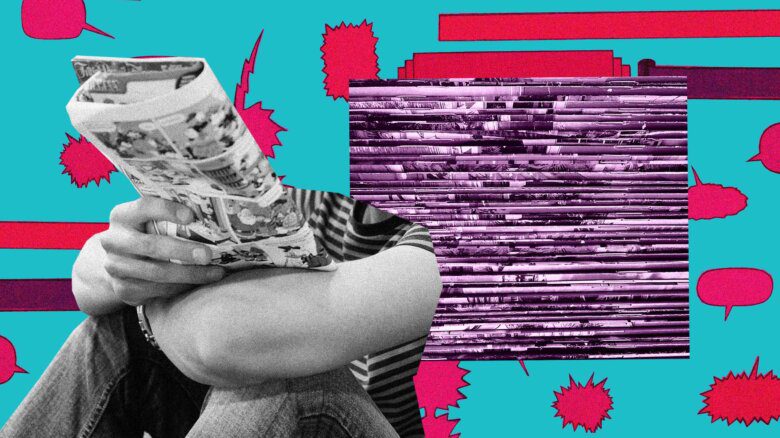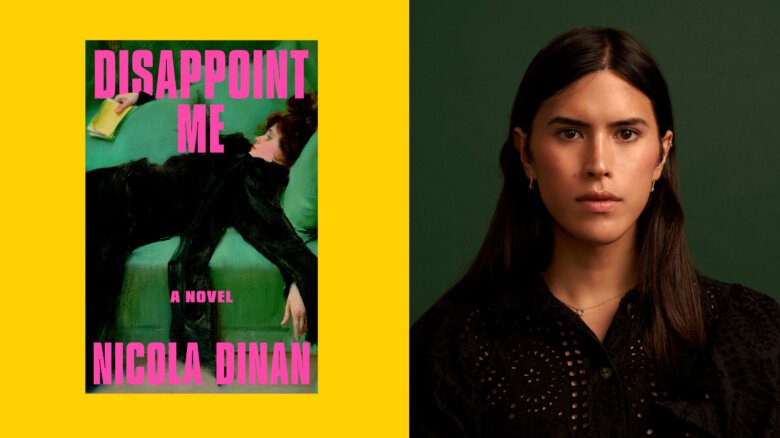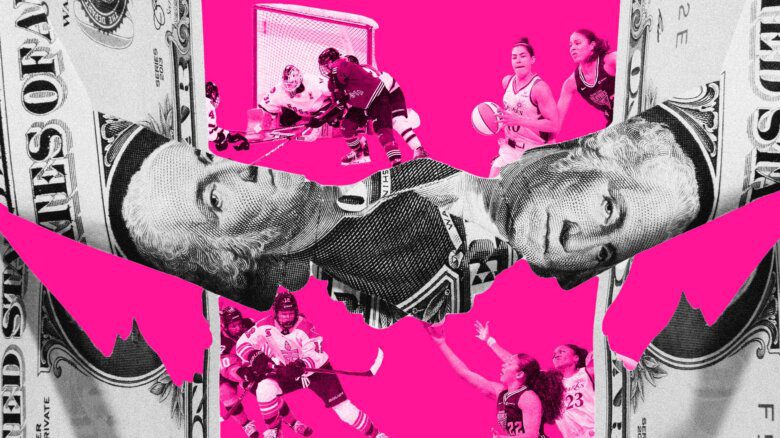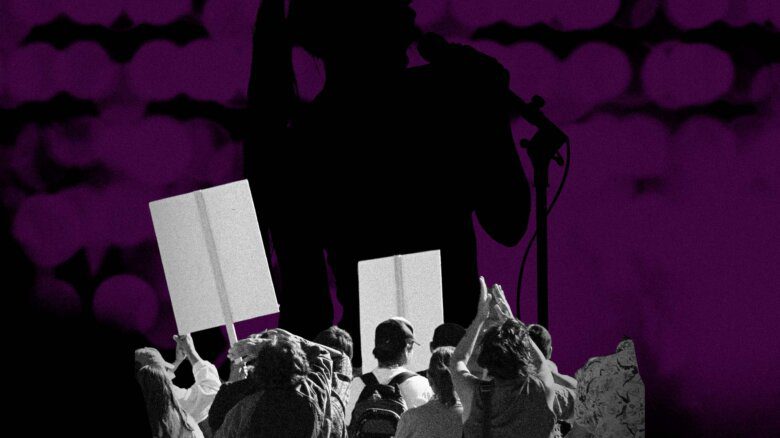Walking along Richmond St on a recent Friday night brought back memories of my teenage years in clubland — lots of women in crotch-cutting miniskirts, worn with stilettos that disfigure their stride, transforming it from sexy catwalk to the Hunchback Of Notre Dame by dawn.
Driving nearby are the blaring Hummers, their slow speed halting traffic. These vehicles are filled with young partygoers, mostly guys looking to pick up. Doused in Old Spice, these slickers are usually left to wait in the long, cold lines while their female counterparts cruise by them with a bat of an eyelash and a flirty laugh.
One thing in Toronto’s Entertainment District has not changed — there are rarely any gay people in sight. Adelaide, Peter, Richmond and Duncan streets are an iconic hub for the city’s partygoers, but it’s unusual to see gay men or lesbians there, aside from perhaps the odd gay guy with a bunch of his female friends.
Or is that just the assumption? Can it be possible that in 2007 Toronto gay guys have nothing to fear going to straight clubland? With this city’s alleged embracing of diversity, it’s hard to believe anybody would even notice a little man-on-man action in the midst of all that hetero coupling.
There was only one way to find out. I packed up my boys — Jon, Vick and Chris — to dance the night away along the Richmond strip and to assess how welcoming these clubs are. I instructed my friends to act as they normally would when I club with them — holding hands, dry humping each other, making out on the dancefloor and being generally fabulous.
all three of my boys were gung ho about the experiment; leading up to our night out, there were lots of phone calls about what we should wear, which clubs we should hit.
My boys, all in their early to mid-20s, were dressed to impress. Vick and Jon were similar in attire with their button-down dress shirts and blazers. Vick, a cute, young Indian with a full-grown beard, has never ventured much in the club district, but his acting background made him a willing participant. Jon, a recent grad from York and a regular in the club district from his promoter days, sported a casual tan-coloured suit. He’s a feisty Filipino with an outgoing, charismatic personality. And then there’s Chris, my little fashionista. A clean-cut Filipino/Chinese Mariah Carey, he dolled out in his skinny jeans and sleek black T-shirt for the night. Chris has a diva nature which, if not respected, can cause him to retreat into his shell.
All so out, loud and proud. But as soon as we walked into Joe, a multilevel nightclub with a clientele consisting mostly of college students, their confidence deflated like a leaky balloon.
As we entered the first-floor rock-music room we felt a stiff wind of aggression. The dimly lit room was reminiscent of a Bud Light commercial, minus the energy. It was sparsely occupied with men and few women, all in the 19-to-30 demographic, beers in hands. Soundgarden circa 1996 was blasting in the background as we felt cool stares all around us.
On the way in I had instructed Jon and Vick to hold hands, but as soon as they hit the door, they quickly let go. Chris trailed behind nervously. Their fear of homophobia set in quickly.
“It seemed like a red light district because everyone was seated to the side,” says Vick in retrospect. “I felt like a caged animal. In order for them to believe I was gay, I had to act gay, but I didn’t want to act so gay that they’d harm me.
“I definitely felt like I had to act more straight because of the comfort level. I feel like I don’t understand straight culture that well.”
Although no one physically raised a fist, the eyebrow-raising, pointing and whispering were enough. It seemed the wardrobe and our vibe were noticeable enough. Any behaviour hinting they were gay was not an option at this point.
We headed to the bar, shot back some tequila and headed upstairs for air. The atmosphere was more laid back, but staring and whispers were still evident. By this time Jon and Vick had worked up enough courage to test the waters with some petting on the couches.
A young man sitting beside them didn’t pay them much attention. I asked him if Jon and Vick’s affection bothered him.
“I’m totally fine with them,” he told me. His name was Chad, a 19-year-old Humber College student.
Chad seemed fairly genuine in his answer, but admitted that he doesn’t see a lot of gay men in the club district — or at home.
“I am from Ingersoll, Ontario, a small town with a population of about 5,000 people, and if they did that in a local bar it wouldn’t be a good time for them, that’s for sure.”
I pressed Chad about what he would not be fine with. That’s where I got a shy, stuttering reply: “Well, I wouldn’t be happy if they tried to hit on me.”
Chad’s answer embodied what most straight men seem to fear — their sexuality being tested. My straight guy friends concur.
“It’s like a primal reaction when someone or something you’re not familiar or comfortable with steps into your territory… you react,” says my boyfriend, Yoani.
So would we feel safer in the top-40 room? Jon and Vick started dancing with each other, attracting more stares. Their discomfort was obvious as they stared helplessly into the distance. As for Chris, it was hard getting him onto the dancefloor — and he used to dance on Electric Circus.
“I didn’t dance because I wasn’t comfortable,” says Chris afterward. “How can I enjoy myself when I’m constantly gawked at?”
But as the night went on, the boys felt more comfortable showing affection and having a good time at Joe. They were getting used to people’s reactions and, more importantly, figuring out that the chances of them getting punched in the nose or otherwise assaulted seemed pretty slim.
***
Across the street at Silk, a tiny lounge and dance club, there were new challenges.
The plush, tan seating surrounding the dancefloor makes the movers and shakers the focus of attention. The latest hip-hop and reggae beats attract a black crowd aged early 20s to early 30s. Jon and Vick in particular told me they both felt out of place, beyond the issue of their gayness.
“There were brothers everywhere,” says Jon. “I think that was the only time I was most uncomfortable.”
But Jon and Vick went ahead with their grinding style of dancing, parting the crowd on the dancefloor like it was the Red Sea. All eyes were on them. They would dance with each other in five-second intervals and break off.
Standing a few metres away was Bon, a black man in his mid-20s who could not stop staring at my friends. I asked him what he thought of them.
“I was just looking — I have no problem with your friends,” said Bon. “Oh, it’s great to see gay guys here. We live in Toronto and it’s very diverse so it’s good your friends are here.”
I didn’t feel Bon’s answer was as honest as Chad’s. But it wasn’t hostility I was sensing as much as the shock of seeing men getting into each other. His comments were Toronto clichés partly because, I think, he was still trying to figure out what he really thought.
Bon’s behaviour was typical of our night. People would stare, whisper and even point, but when I chatted them up, their answers didn’t match their reactions. I heard the “Toronto diversity” line at least five times, along with praise for my friends for coming out.
***
This was most evident when we were in our third club, Privilege, an old-school dance club featuring house music, a disco ball and 905-ers between the ages of 19 and 25.
By this point, Vick and Jon had finally mustered up the courage to make out on the dancefloor. This definitely turned heads, especially from three young women who, if I were to apply stereotypes, seemed like the types to have driven in from Woodbridge in a Camero.
“Oh my God — did you see that?” one of the girls exclaimed during my friends’ make-out session under the disco ball. I had to investigate.
“It’s just so shocking to see them make out because I never see that here,” said one of them. I found their shock surprising after they all told me they’d been to the Pride parade and have ventured to Church St from time to time.
“I don’t know…. It’s just so weird…. I didn’t expect that,” said Rocia, who must have been in her early 20s. “You never see gay guys make out here… or gay guys in general at this club.”
Rocia claimed she would have reacted the same if she saw straight people making out. Doubtful. While people may go the club district to have fun, dance and drink, it’s mostly a spot for straight hookups. When gay men are not threatening — focussing their attention on their female friends — they’re okay. But when they’re being themselves, making people realize that there are other kinds of hookups that can happen, it seems to disorient them.
My friends seemed most comfortable at Privilege; the dancefloor was big, while lasers and dry ice offered some level of privacy.
“People did not seem to mind that we were there, as much as the other clubs,” says Vick. “There were stares, but the club was so crowded you could just blend in.”
So my friends’ discomfort might be less about fear of aggression, more about being a spectacle — something novel to be poked at and treated differently — even though their behaviour was par for the course in a gay venue.
“It’s great that people try to be homo-friendly but they don’t know how to deal with it because they’re not exposed to it,” says Jon. “It’s like they get a jolt of reality that gay people do exist.”
Tellingly, most of the people I interviewed did not live in the downtown core and did not have gay friends, except for colleagues. Over the course of the evening, my friends were able to separate their feelings of being a spectacle from fear of a confrontation. “After you get over the staring and pointing and know that I’m not going to get punched in the face, I could loosen up,” says Jon.
But it seems that some straight people think that fear is merited.
Mike, a club promoter for Silk who wouldn’t tell me his last name when I spoke to him after our night out, says he doesn’t see a lot of gay people hanging out in the club district. “Probably because it’s not a very safe place for them,” he says. He told me a story of a gay black DJ, who usually DJs around the club district, who got beat up after dancing with his boyfriend at a private party he was spinning at.
Mike does not remember the name of this DJ and I had difficulty verifying the story. Mike “Deko-ze” Babb, a gay, black DJ who spins at straight and queer venues, says he has not heard of this story and finds it very “terrifying.”
Deko-ze says the absence of gay men in clubland might start with the fact that the clubs don’t reach out to homos.
“What I notice is that gay and straight people love soul, funk, house, rap, but I don’t see the Richmond clubs go out of their way to promote and advertise in the village and that will dictate who goes to those clubs — maybe that’s why I don’t go,” says Deko-ze. He says that if the big clubs want gay clients, they will have to hire gay promoters and staff. There is so much nervousness around the issue, it’s probably true that only a special effort by the venues can heal the divide.
***
How did my boys feel about the experiment? “The people were friendly, but it didn’t feel honest — it wasn’t a sincere reaction. It’s like affirmative action — people bite their tongues about what they really think and feel,” says Vick. “On the other hand it’s good. It shows the manifestation of progress gays have made in the straight world.”
Jon sees parallels with gay clubs, where straight people are often treated with suspicion.
“They [gay people] want that exclusivity where they feel safe. In turn, they create their own bubble,” says Jon.
None of my guinea pigs say they would go to the club district again unless they had to, or were with a group of friends.
At the end of the night, while waiting to get my jacket from coat check, I see Jon and Vick getting their photo taken by the club’s photographer to be posted on their website. To my left, I see Chris ferociously typing in his Blackberry — probably SOS messages. Outside I walk to the corner with Chris. He’s approached by a drunken man in his mid-30s who asks him the time. Chris replies in his gay twang that it’s 1:40am.
“1:40am? Are you gay or something?” the man mockingly replies, then walks off.
Yes, being gay here is still a novelty. Maybe I will try again in 2015.
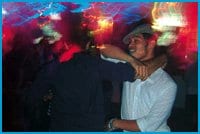
 Why you can trust Xtra
Why you can trust Xtra